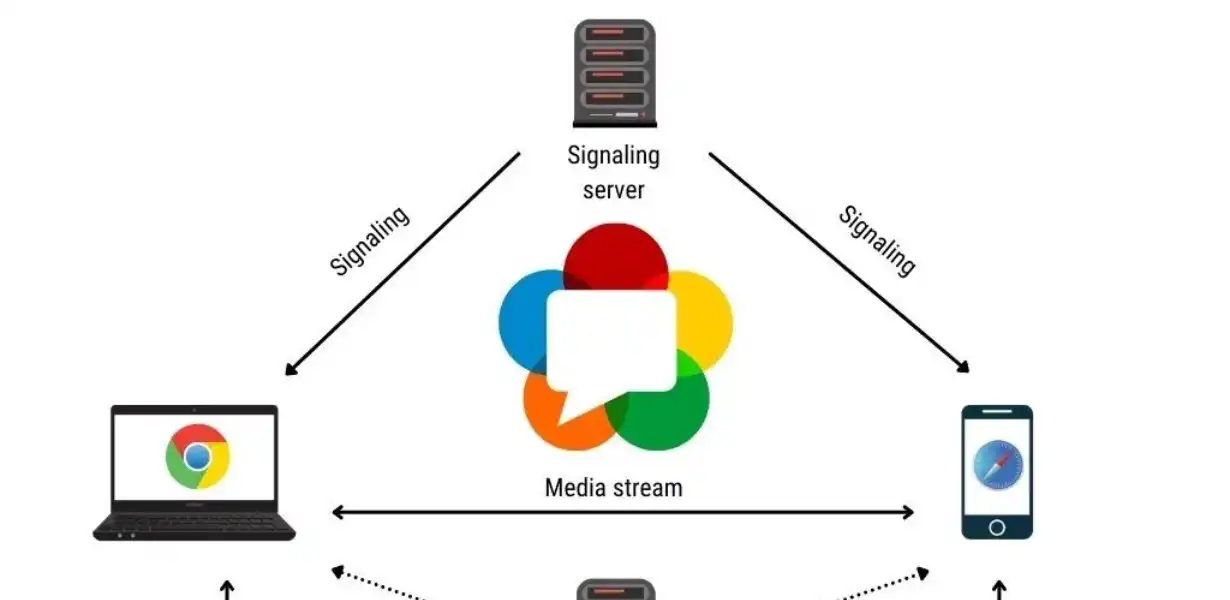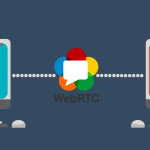
Empowering Seamless Communication: Unveiling WebRTC’s Vital Role in the Metaverse
- Post
- August 8, 2023
- Web APIs, Web Technologies, WebRTC
- 0 Comments
In an increasingly interconnected world, real-time communication has become the cornerstone of our digital interactions. As the metaverse gains traction, a virtual realm merging physical and digital experiences, the demand for immersive, low-latency communication tools becomes even more pronounced. Enter WebRTC, a game-changing technology that stands as the bridge between the metaverse’s immersive potential and real-time communication’s essential need.
Introduction: Pioneering the Metaverse’s Communication Landscape
The metaverse is a burgeoning digital universe where individuals interact, work, and play through avatars, harnessing augmented and virtual reality. This evolving concept introduces novel opportunities for communication and collaboration, demanding a sophisticated system to facilitate seamless interactions. WebRTC, which stands for Web Real-Time Communication, emerges as the bedrock technology that empowers users to communicate effortlessly within this intricate metaverse framework.
Understanding WebRTC’s Architecture and Functionality
At its core, WebRTC is an open-source project aimed at embedding real-time communication capabilities directly into web browsers and applications. This empowers developers to create applications with audio, video, and data sharing functionalities, all without requiring users to install additional plugins or software. WebRTC’s architecture revolves around three primary components:
- Media Capture: WebRTC enables the capture of audio and video streams from users’ devices, ensuring high-quality and synchronized real-time communication.
- Signaling: To establish communication sessions, WebRTC employs signaling protocols. It’s responsible for negotiating connection parameters and managing the data exchange process.
- Network: WebRTC optimizes network routes for data transmission, prioritizing low latency and efficient bandwidth usage.
Empowering the Metaverse: WebRTC’s Key Advantages
WebRTC’s adoption within the metaverse is driven by its inherent advantages, making it the go-to technology for real-time communication:
- Low Latency: In a metaverse where users interact in real-time scenarios, minimal delay is essential. WebRTC ensures that audio, video, and data transmission occur with imperceptible latency.
- Compatibility: WebRTC’s integration with web browsers eliminates the need for additional installations, facilitating a seamless user experience across various devices and platforms.
- Security: Encryption mechanisms secure data during transmission, maintaining the privacy of conversations within the metaverse.
- Scalability: With an architecture designed for scalability, WebRTC accommodates a growing user base, ensuring consistent performance as the metaverse expands.
- Interactivity: WebRTC supports interactive features like real-time annotations, co-browsing, and collaborative document editing, enhancing communication within the metaverse.
WebRTC Control and Customization for the Metaverse
WebRTC offers developers an extensive Application Programming Interface (API) that enables precise control over communication functionalities within the metaverse. Developers can customize audio and video settings, manage network constraints, and even fine-tune security measures. This granular control ensures that the metaverse’s communication features align with the unique requirements of each virtual environment.
Ensuring Quality with WebRTC Testing
To deliver a seamless communication experience within the metaverse, rigorous testing of WebRTC implementations is imperative. Developers employ a variety of testing methods to validate performance, such as:
- Network Simulation: Simulating varying network conditions allows developers to gauge WebRTC’s behavior under different scenarios, ensuring optimal performance across a range of connectivity levels.
- Quality Assessment: Comprehensive quality checks assess audio and video transmission, guaranteeing that users perceive clear and synchronized communication.
- Compatibility Testing: Given the diverse devices and browsers used within the metaverse, compatibility testing ensures that WebRTC functions uniformly across different platforms.
Embracing the Future: WebRTC’s Role in Shaping the Metaverse
As the metaverse evolves, its success hinges on the seamless integration of immersive experiences and effective communication. WebRTC serves as the foundation upon which this integration thrives, enabling users to transcend geographical barriers and interact effortlessly. With its ability to provide low-latency, customizable, and secure real-time communication, WebRTC is poised to play a pivotal role in shaping the metaverse’s landscape.
Final Words: Crafting the Metaverse’s Communication Nexus
WebRTC emerges as the driving force behind the metaverse’s communication prowess. By seamlessly merging the virtual and real, it empowers users to transcend boundaries and engage in immersive interactions. As the metaverse continues to flourish, the role of WebRTC becomes increasingly vital, ensuring that communication remains at the heart of this dynamic digital realm.
Commonly Asked Questions
Q1: What exactly is WebRTC?
WebRTC, short for Web Real-Time Communication, is an open-source technology that enables real-time audio, video, and data communication directly within web browsers and applications. It eliminates the need for additional plugins or installations, providing a seamless experience for users.
Q2: How does WebRTC contribute to the metaverse?
WebRTC serves as the backbone of communication within the metaverse. It facilitates low-latency audio, video, and data transmission, allowing users to interact and collaborate within virtual environments effortlessly.
Q3: Can WebRTC be customized for different metaverse scenarios?
Absolutely. WebRTC offers a robust API that grants developers fine-grained control over communication features. This customization ensures that communication within the metaverse aligns with the unique requirements of each virtual setting.
Q4: Is security ensured with WebRTC in the metaverse?
Yes, security is a top priority. WebRTC employs encryption mechanisms to secure data during transmission, ensuring the privacy and integrity of conversations within the metaverse.
Q5: How does WebRTC testing guarantee quality?
WebRTC testing involves network simulation, quality assessment, and compatibility checks. These tests ensure that communication remains clear, synchronized, and dependable across a variety of scenarios and platforms.




